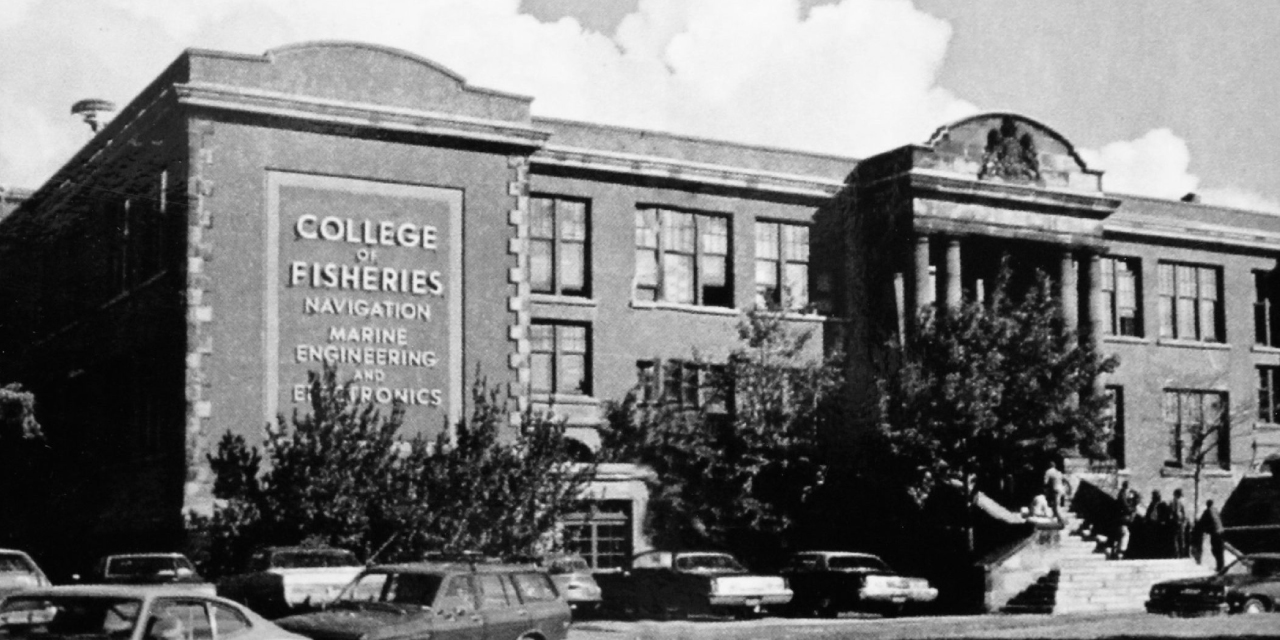Fish sticks, cranberry sauce and the birth of MI
During the 1950s, televisions became widely available and were lighting up living rooms across North America. With the advent of television came a desire for quicker and easier meals.
TV dinners hit the market in 1953, and precooked meals that could simply be warmed in the oven became all the rage. That’s when the fish stick was born.
The inventor of the fish stick was a Newfoundlander who would later go on to become the first president of the Marine Institute.
William Hampton was born in St. John’s in 1908. He was an exceptional student and was a member of the first class at Memorial University College (MUC) when it opened on Parade Street in 1925.
At MUC, Dr. Hampton excelled at chemistry and physics. After completing his two years at the university college, he travelled to Halifax to finish his degree at Dalhousie, where he graduated with his bachelor of science in 1930.
With the help of a three-year scholarship from the National Research Council of Canada, he completed both his master of science and PhD at McGill in 1933.
Dr. Hampton taught chemistry at McGill for two years before returning to Newfoundland and accepting a position at a new fisheries research station in Bay Bulls.
Within a year, he became acting director of the station, but unfortunately, it burned down in 1937.
He worked tirelessly to rebuild a new station for fisheries research on the St. John’s waterfront. The new facility opened in 1940, but Dr. Hampton, for some unknown reason, had still not been promoted and continued to hold the title of acting director.
Since a permanent promotion did not seem forthcoming, he accepted a position with General Seafoods in Halifax in 1943.
During his time at General Seafoods, Dr. Hampton developed a method for freezing large units of fish that could then be cut into smaller pieces. These smaller pieces were then battered, breaded, deep fried, cooled, packaged and frozen again. They could then be reheated in an oven in under 20 minutes.
Dr. Hampton and his assistant, E.J. Maher, were awarded the patent for the fish stick in 1955.

The College of Fisheries, Navigation, Marine Engineering and Electronics was originally located on Parade Street at the former campus of Memorial University College. Photo From Memorial University Archives.
That same year, Dr. Hampton left General Seafoods. He took up a position with a branch of the United Nations, becoming the head of the fish processing division of the Food and Agriculture Organization (FAO).
His work with the FAO took him all over the world, and he was often separated from his family for lengthy periods, so he returned to North America to work for Ocean Spray in Massachusetts.
At Ocean Spray, his background as a chemist allowed him to develop new methods for the preparation of cranberry sauce.
Then he received a phone call from Newfoundland Premier Joseph Smallwood, who asked if he would be interested in becoming the president of a new college in St. John’s.
The College of Fisheries, Navigation, Marine Engineering and Electronics (now the Marine Institute) officially opened on January 15, 1964, and Dr. Hampton was named its first president.
When it opened, the Marine Institute (MI) was like no other college in the world. The staff couldn’t even find textbooks for the courses they had to teach because no textbooks had ever been written on those subjects. Everything was new.
Dr. Hampton wrote, “We have to prepare all the text material ourselves starting at the very beginning.”
Dr. Hampton helped build the programming at MI from the ground up. He was instrumental in developing the curriculum that would set the institute on the path to becoming a world leader in fisheries and marine training.
Unfortunately, after just four years as president, his health deteriorated, and he died in 1968.
In 1985, MI moved to its Ridge Road location, and Hampton Hall is named in honour of Dr. William Hampton.
So, the answer to the questions who invented the fish stick? and why does cranberry sauce taste so great with turkey dinner? is Dr. Hampton. But his contribution to Memorial and the province far exceeds this.
MI is one of the largest and most-respected marine educational facilities in the world. And it was Dr. Hampton who helped establish it as an institution built by this place and for this place.
